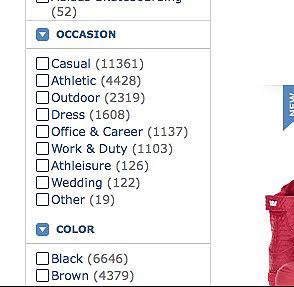

Seeing Things from Another Person's Perspective
Seeing things from another person’s perspective is difficult. Lawrence Kohlberg, the psychologist, discussed this issue in detail when he developed his theory of the development of morals. He pointed out that despite the fact that human beings “are inherently communicative, capable of reason, and possess a desire to understand others and the world around them,” they often have difficulty getting others to see the moral rationalization for their decisions. Though Kohlberg discussed this from differences in each person’s position on a linear progression in moral development, the same problem also applies when people are trained to view things from different perspectives. Take, for example, the case of designers and developers.
Developers are obviously trained to see things from the code perspective. However, they are also explicitly trained to look for edge cases — special cases that the software design must accommodate. Designers, on the other hand, are trained to look at things from the user’s perspective and are implicitly taught to focus on common or normal behavior, not exceptions. It is for this reason that error analysis in design is a critical, but often underappreciated, component of interaction design. Designers have to stop thinking about common behavior and think about the exception case, which is a totally different perspective. When designers and developers discuss the same thing (potential error behavior), they are actually looking at it from two different perspectives and it’s hard to get each to see the other’s perspective as the rationale for decision making in a design.
Proper detection of likely human error is not an easy task. Books have been written on the subject, but probably the most common popular example is the famous butterfly ballot in the 2000 presidential election — a significant design flaw that was missed despite multiple reviews. Even usability testing would have been unlikely to show it at a level that anyone would have perceived as a significant issue. (This is a false negative finding: failing to find an issue where one exists.)
Problems in perceiving exception behavior is associated with the issue of transferring our knowledge from the conscious mind to the unconscious mind (something discussed in past newsletters). However, another factor that makes conscious perception of exception behavior difficult is the speed at which the unconscious mind operates. The unconscious mind operates at a speed we cannot replicate in our conscious thinking. As a result, the unconscious mind can work out complex problems and see logical solutions where the conscious mind struggles. (This is a false positive finding: finding an issue where one does not exist.)
One of my favorite examples showing how the unconscious mind can perceive something as logical that our conscious mind will struggle with is the selection of options within a faceted search design. If that term is Greek to you, here’s an example of the first page of search results from a popular website that sells shoes.

By default, all of the shoes are shown on the screen. However, to make things easier for the user, there are a series of facets or filters on the left side of the page that users can select to narrow their choices. (You’ve probably seen this design before but may not have realized that this is a faceted search.)
If you would like to see only Athletic Shoes, you select that facet and only the 4428 options available are displayed. Similarly, if you select Dress along with Office & Career, only the 2745 options associated with those two facets will be displayed. This seems logical. But do you see the logical flaw in this design? Probably not. Most people don’t. And we don’t recall struggling with the logical flaw when we first encountered it because our unconscious mind worked it out quickly and is fine with it.
Here’s the flaw: If selecting Athletic Shoes shows only those shoes, and selecting Dress and Office & Career shoes only shows those shoes, you need to select all of the facets to see all of the shoes. If none of the facets are selected (the default), you should see no shoes, not all shoes. Our unconscious mind makes sense of this design in a way we probably don’t even understand, but our conscious mind has a hard time with it. (If you’re not sure that this is really a logical flaw, point this out to somebody else and see their reaction. Chances are very high that they won’t notice this flaw at first but will struggle with it once it’s pointed out to them, particularly if they’ve encountered it before.)
Here’s a little brain twister for you that’s along the same lines. Three customers go into a bar to get a bottle of wine. They find a nice bottle of wine on the menu for $30. Each of the three customers pays $10 to the barman. The barman realizes the wine is on sale and is only $25. He asks the waiter to return $5 to the three customers. Knowing the three customers will have difficulty splitting up $5, he puts $2 in his pocket and returns $3 to the customers. No problem, right?
But wait. Each of the three customers originally paid $10. They were then given $1 back. Therefore, each customer spent $9. We know that $9 x 3 is $27. We also know the waiter kept $2. However, $27 plus $2 is $29. What happened to the other dollar?
Did your conscious mind work fast enough to catch the flaw in this logic?

